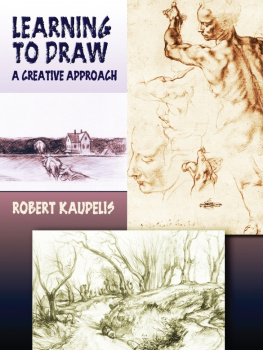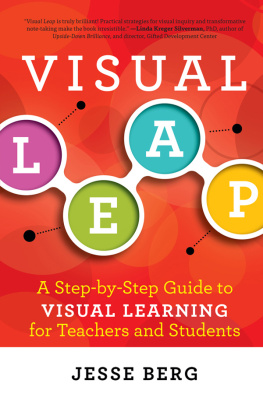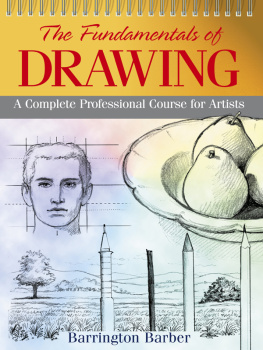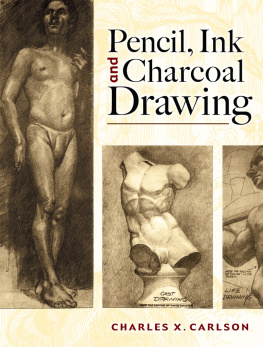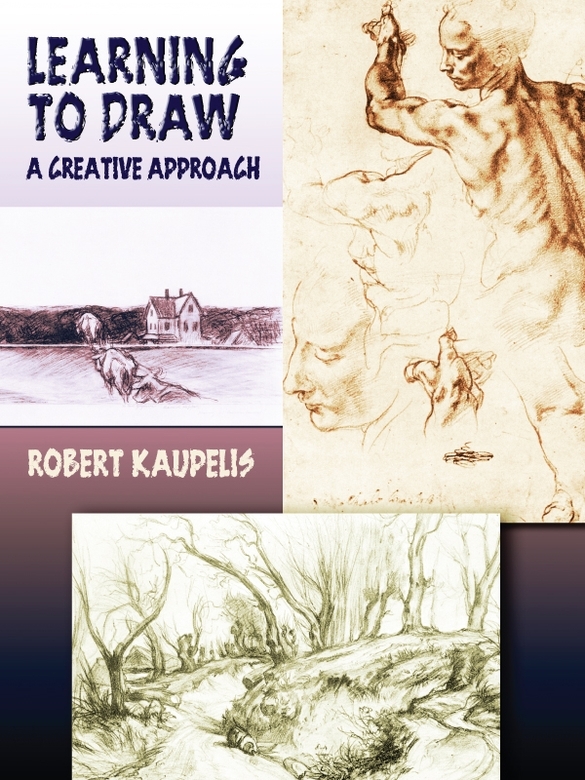I am indebted to the hundreds of students whose enthusiasm and response to my teaching methods have given this book its reason for being. All I can say is thank you. I regret that I was unable to include the hundreds of additional drawings made available to me by students, and I give special thanks to the students whose work is included and whose names appear throughout the text. The Metropolitan Museum of Art, The Museum of Modern Art, The Chicago Art Institute, The Philadelphia Museum of Art, and the Sterling and Francine Clark Art Institute were all most generous in granting permission to reproduce drawings from their collections. Stephen H. Goldberg, Charles Uht, and John F. Waggaman deserve the photographic credits. Donald Holden and Susan Meyer, my editors at Watson-Guptill, deserve gold stars for their patience and understanding. I am especially grateful to Howard Conant who not only wrote the preface, but encouraged me in the early phases of the writing, read the text, and has made it possible for me to teach drawing over the years at New York University. To list the contributions of my wife, Pecky, would necessitate the addition of another chapter.
bibliography
BEAN, JACOB. 100 European Drawings in The Metropolitan Museum of Art. New York: The Metropolitan Museum of Art, 1964.
BEAN, JACOB and STAMPFLE, FELICE. Drawings From New York Collections: The Italian Renaissance. New York: The Metropolitan Museum of Art and The Pierpont Morgan Library, 1965.
BENESCH, OTTO. Rembrandt: Selected Drawings . London, New York: Oxford University Press (Phaidon Press), 1947.
BERENSON, BERNARD. The Drawings of the Florentine Painters . Chicago: University of Chicago Press, 1938. Amplified edition. 3v.
BOWIE, THEODORE. The Drawings of Hokusai. Bloomington, Indiana: Indiana University Press, 1964.
de TOLNAY, CHARLES. History and Technique of Old Master Drawings . New York: H. Bittner and Company, 1943.
HALE, ROBERT BEVERLY. Drawing Lessons from the Great Masters . New York: Watson-Guptill Publications, 1964.
HAVERKAMP-BEGEMANN, EGBERT, LAWDER, STANDISH D., and TALBOT, CHARLES. Drawings from the Clark Art Institute . New Haven: Yale University Press, 1964. 2v.
HOLME, BRYAN, ed. Master Drawings. New York, London: Studio Publications, 1943. 1948.
HERBERT, ROBERT L., Seurats Drawings . New York: Shorewood Publishers, Inc., 1964
MERMOD-LAUSANNE, EDWARD., ed. French Drawing of the 20th Century. New York: Vanguard Press, n.d.
METROPOLITAN MUSEUM OF ART. European Drawings . New York: The Metropolitan Museum of Art, 1943. 2v.
MONGAN, AGNES. One Hundred Master Drawings . Cambridge: Harvard University Press, 1949.
MONGAN, AGNES and SACHS, PAUL J. Drawings in the Fogg Museum of Art. Cambridge : Harvard University Press, 1946. 3v.
MOSKOWITZ, IRA., ed. Great Drawings of all Time . New York; Shorewood Publishers, 1962. 4v.
MUSEUM OF MODERN ART, WHEELER, MONROE., ed. Modern Drawings. New York: Museum of Modern Art, 1944.
POPHAM, ARTHUR E. The Drawings of Leonardo da Vinci. New York: Reynal and Hitchcock, 1945.
REYNOLDS, GRAHAM. Twentieth Century Drawings . London: Pleiades Books, 1946.
SACHS, PAUL J. Modern Prints and Drawings . New York: Alfred A. Knopf, 1954.
SACHS, PAUL J. The Pocketbook of Great Drawings . New York: Washington Square Press, Inc., 1951.
SCHULER, J. E., Great Drawings of the Masters. New York: G. P. Putnam & Sons, 1962.
SHOOLMAN, R. L. and SLATKIN, C. E. Six Centuries of French Master Drawings in America . New York: Oxford University Press, 1950.
SHOREWOOD PUBLISHERS, INC. Drawings of the Masters . Twelve volumes by various authors including the following titles: French Impressionists; Italian Drawings from the 15th to the 19th Century; Flemish and Dutch Drawings from the 15th to the 18th Century ; 20th Century Drawings; 1900-1940; 20th Century Drawings: 1940 to Present; German Drawings from the 16th Century to the Expressionists; French Drawings from the 15th Century through Gericault; American Drawings; Spanish Drawings from the 10th to the 19th Century; Persian Drawings from the 14th through the 19th Century, From Cave to Renaissance. New York: Shorewood Publishers, Inc.
TIETZE, HANS. European Master Drawings in the United States. New York: Augustin, 1947.
TONEY, ANTHONY., ed. 150 Masterpieces of Drawing . New York: Dover Publications, Inc., 1963.
VAYER, LAJOS., ed. Master Drawings: From the Collection of the Budapest Museum of Fine Arts 14th-18th Centuries . New York: Harry N. Abrams, Inc.
WATROUS, JAMES. The Craft of Old-Master Drawings . Madison, Wisconsin: The University of Wisconsin Press, 1957.
drawing materials
A drawing material can be made from anything you can dip into paint, ink, or dye. A drawing material is anything which leaves a mark when you drag it across paper, wood, cardboard, clay, or other surfaces.
When we think of drawing, we generally think of pencils, pens, and brushes; however, its possible to use many other materials, each of which can be exploited for its own unique qualities. Marcel Duchamp, in the accompanying portrait, used not only his fingers as drawing instruments, but also a typewriter!
Twigs of various sizes will produce interesting lines. You can dip tennis balls into paint or ink to achieve a big, bold line or to smear a large area of tone into a composition. Rope and string will produce a wiggly, nervous effect, because the ends cannot be controlled in the same tight way as those of a pencil or pen point. Crumpled tinfoil, dipped into ink, can be used like a rubber stamp to lay in a tonal area and create an unusual texture simultaneously. Likewise, corn cobs, sponges, or other highly textured materials can give interesting tonal effects.
With pipe cleaners, you can make lines with the tip or you can drag the side across the page to get a rich, striated effect. You can achieve a similar effect with a toothbrush or a comb. Razor blades can be dragged across a wet area of ink or paint and, depending on the rhythm of the movements, they can be used to create endless variety of lines, tones, and textures. Razor blades can also be used to scratch into tonal areas after they are dry. Saliva might be the handiest source of moisture when you want to smudge an ink or pencil line in your sketchbook. And to these materials, I could also add paper straws, clothespins, tongue depressors, feathers, vegetables, sand, and orangesticks.
Although these suggestions may seem a little strange, Ive seen all the materials used at one time or another. Actually, I feel that materials in and of themselves are very unimportant. Nevertheless, your attitude toward the materials is important, having a profound effect on your approach to drawing,
ATTITUDE TOWARD YOUR TOOLS
All too often, materials become an inhibiting factor for the beginning student. Instead of bending with the material, instead of seizing upon the terrific potential inherent in the materials, the beginner too often allows the materials to create a wall between himself and the paper.
Oh, that paper! That beautiful, spotless, white sheet of paper! Its so unfair to destroy it, to make a mark on it! To smudge it! Ive heard of one drawing teacher who makes his beginning students crumple and step on their drawing paper before they start to draw. Whats the point? Being free and unafraid is the point; his method helps to smash the inhibiting barrier of the beginners precious attitude toward the tools. After all, they are only tools, an extension of your hand, a means of making tangible what you are, think, feel, and see!

